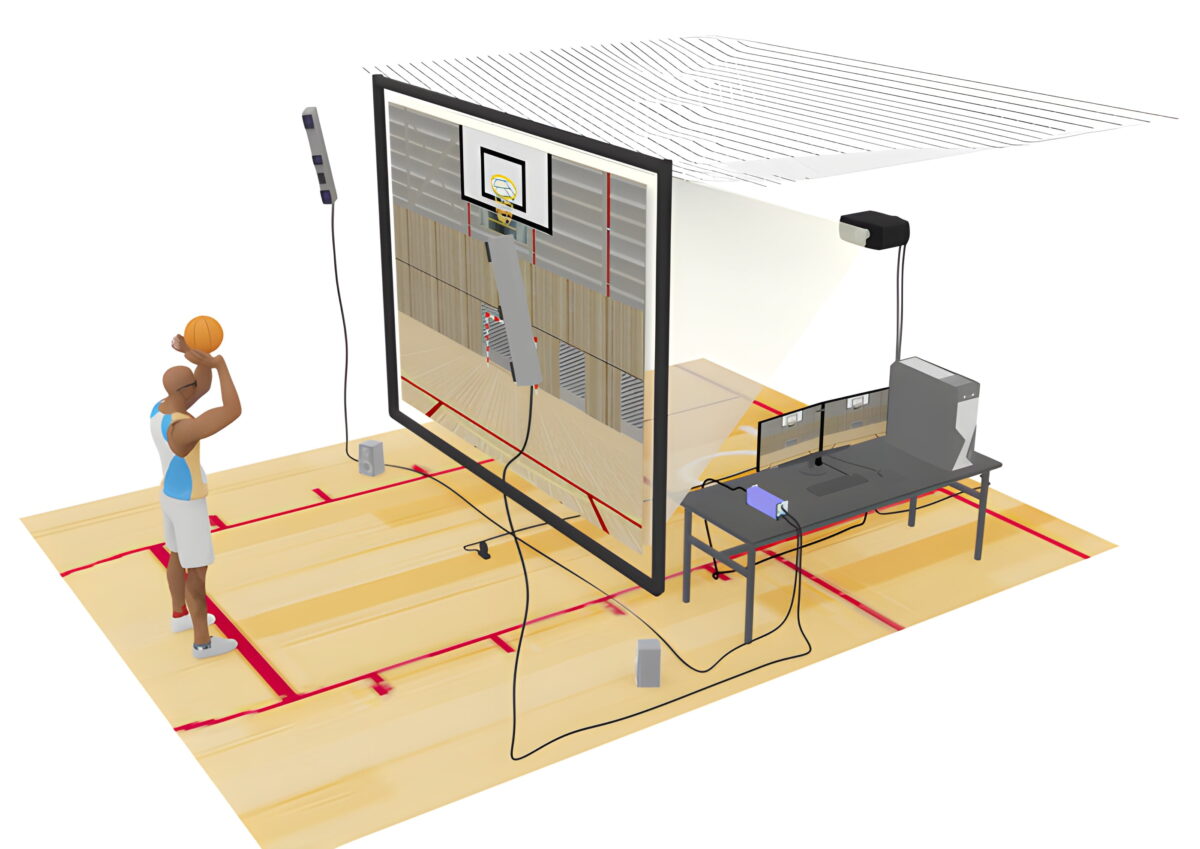Can VR help identify basketball talent?

As part of a study, a 3D basketball simulator was used to uncover hidden talents in basketball players.
In the past, talent scouts have often focused on physical characteristics such as height when identifying basketball talent. A joint study by Staffordshire University and the Université d'Aix-Marseille focuses on technical nuances instead.
Using a 3D basketball simulator, the researchers were able to identify key skills such as the dynamic adjustment of the shooting motion, which is more common in skilled players.
Talent scouting with virtual reality
Such movements also play an important role for NBA stars, says study co-leader Dr. Pooya Soltani. He is a senior lecturer in game design at Staffordshire University. Stephen Curry of the Golden State Warriors, for example, consistently hits surprising long-range shots with his dynamic shooting technique, Soltani says.
It is essential for coaches to be able to reliably measure such fine adaptations, which can sometimes be lost in the heat of the game.
The study uses the term virtual reality, but no VR headset was used. Instead, the experimental setup consisted of a 3D headset with active shutter technology (Edge RF by Volfoni) and a rear projection screen with a net to catch the ball.
The virtual scene was always adapted to the players' viewing angle. Twelve experienced and ten novice players wore several Codamotion CX1 tracking markers for motion analysis. The ball was also equipped with sensors to accurately record its movement. A virtual basket allowed the throwing distance to be increased while the markers on the court remained unchanged.
Experienced players were better able to adjust their throwing motion based on visual information, the results showed. For example, movement patterns differed when switching from a "free throw" with both feet on the floor to a jump shot with greater distance.
3D basketball simulator detects nuances
"These adjustments were also evident within players’ movements. For example, experienced players used more free throws, which increase stability when the ball is released and therefore lead to more successful shots," Soltani explains in his accompanying article. He co-led the study with assistant professor of sports science, Dr. Antoine Morice of the Université d'Aix-Marseille.
Morice also has high hopes for the results in a Staffordshire University press release, saying that "Talent identification can take up a lot of time and coaches’ evaluations can sometimes be subjective and unreliable. Creating a ‘VR game’ based on our research could objectively test a player’s ability using a VR headset and instrumented ball."
Note: Links to online stores in articles can be so-called affiliate links. If you buy through this link, MIXED receives a commission from the provider. For you the price does not change.